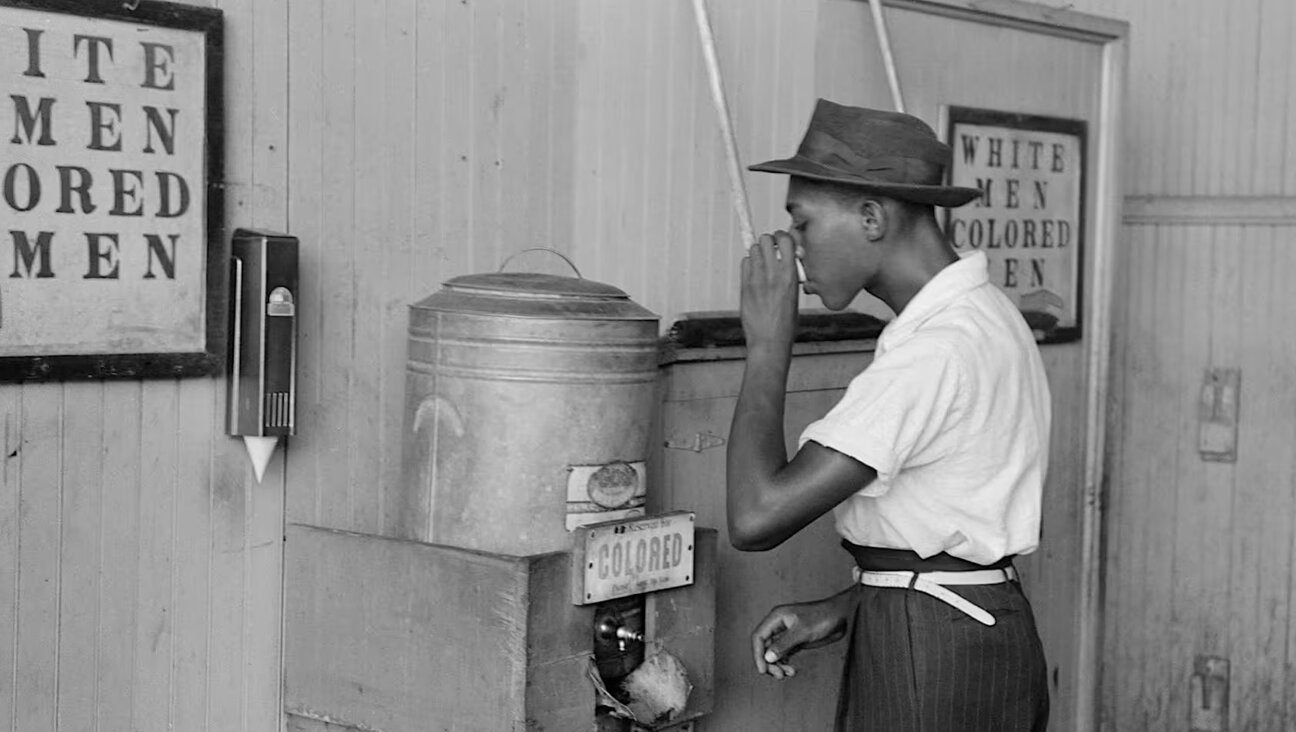Bellow and Nabokov are gone; their delightfully smug offspring lives on

Martin Amis Image by Getty Images
It’s a brave writer who declares war on cliché. Eventually you’ll lose, probably by friendly fire, and even if you manage to ignore the bullets in your ass, someone else will be glad to poke at them. Most writers, knowing this full-well, try to avoid clichés without fighting them outright. Orwell may have scolded his peers for “worn-out metaphors” and “staleness of imagery,” but he was quick to add, “for certain you will find that I have again and again committed the very faults I am protesting against.”
To the best of my knowledge, Martin Amis, author of the 2001 essay collection “The War Against Cliché,” has taken out no such insurance policy. He prefers to wage the unwinnable. In his own work, he avoids clichés like, um, the plague: A blouse is “wenchy,” a bartender is “heroically methodical,” a business manager presses a “hot phone to his reddened ear” (those are all from the same story, mind you). Reviewing the work of others, he mocks writers great (Joseph Conrad) and garbage (Thomas Harris) for their clichés, and when he does, his diagnoses are gleefully symptom-free (“Hannibal is a necropolis of prose”).
When he screws up, naturally, the peanut gallery goes wild — there’s no joy like the joy of out-sticklering a stickler. The terms Amis sets for his own writing are so ambitious that a slip, any slip, seems like a Chaplin-sized pratfall. And so, with the release of his latest novel “Inside Story,” we find both Parul Seghal in The New York Times and Leo Robson in Harper’s cackling over “bright-eyed and bushy-tailed” as if it were the hypocrisy at the heart of the Amis project instead of three unoriginal words out of 100,000, while Josephine Livingstone in The New Republic kvetches that Amis uses the word “deliquescent” too many times (good heavens!). Meanwhile, Sally Rooney can get away scot-free with “For a few seconds he says nothing, and the intensity of the privacy between them is very severe, pressing on him with an almost physical pressure on his face and body.” (Pressing with pressure, how ‘bout that? Give a novelist a reputation as her generation’s voice and she can thereafter scribble like a seventh-grader.)
If book critics are too dismissive of Amis’s recent work, it’s partly because he’s made it so easy for them. This is, after all, the smug SOB who was hired by the Times Literary Supplement straight out of university; who published his first novel at 24 and his second at 26; who was literary editor of the New Statesman at 27; who in his mid-30s could claim Saul Bellow as a close friend (“I apologize in advance for all the name-dropping,” he writes early in “Inside Story”); who, perhaps not un-relatedly, is the son of the great comic novelist Sir Kingsley Amis. And this is the same SOB who used to cheat on his partners like Danny Ocean cheating at cards; who received a half-million-pound advance for “The Information” (1995), a chunk of which he promptly dropped on a series of questionable oral surgeries because he didn’t like his teeth; who in 2008 authored a collection of alternately terrible and boring provocations on Islam; who — only slightly worse — is rumored to snort with delight while rereading his own books.
Such is the irony of Martin Amis. The belletrist, the worshipper of the written word for the written word’s sake — this is the same guy who’s spent the better part of his adulthood in the tabloids, whose sparkling sentences are inevitably clouded by the runoff of his life, and who, decade after decade, has gone on making sparkling sentences from that runoff.
Rightly, some critics have seen this as something of a contradiction, or at least an odd tension. Wrongly, they’ve tried to resolve it, and then, when they’ve failed at that, held it up as proof of a fundamental incoherence. You can taste the condescension in the first batch of reviews of “Inside Story,” even the nice ones: “grab-bag structure,” “miscellaneous” (The New Yorker); “tangled,” “unstable” (The New York Times); “a curious mashup of fiction and memoir” (The Guardian). The consensus seems to be that Amis’s latest (and, he claims, last long) novel never really works out its problems — at best, it’s intermittently fun; at worst, it lays bare what was always wrong with the author all along. Yes, but no. Amis doesn’t have the decency to work himself out, thank god. Instead of resolving his contradictions, he does what artists were always supposed to do: turn them into art.
Nabokov hated Freud — hated him so intently that he’d sooner speak of “the Viennese witch-doctor” or “the Austrian crank with a shabby umbrella” than utter the awful name. In Nabokov’s view, he represented everything wrong with the study of literature: Freudian critics wanted to reduce fiction to psychoanalysis, characters to complexes, plots to Eros and Thanatos. Worst of all, they insisted on a fiction of ideas — when, for Nabokov, fiction was self-evidently about beauty, above all the aesthetic beauty of words. Decades before Amis’s war against cliché, Nabokov declared jihad on the bad sentence and excommunicated any novelist who wrote one (he didn’t much care for Conrad, either).
And yet, as James Wood wrote, “we read Nabokov against himself, determined to find in the neurotically perfected enamel of his prose the little chips and fissures of his personal anguish” — in other words, a “very Freudian refusal to admit to his own Freudianism.” Nabokov lost a brother to the Nazis and his father to the Russian monarchists — surely this left some mark on his fiction? The more he insists on art for art’s sake, the more we think of art as masked autobiography.
He knew what he was doing, of course. He couldn’t have written a novel about an émigré literature professor and not expected readers to connect a few dots; by writing a novel about an émigré literature professor who rapes 12-year-olds, he all but dared them. Seven years after “Lolita” came “Pale Fire,” a book that is, among many other things, a sneering parody of literary wonks who insist on interpreting everything autobiographically. Literary wonks have insisted on interpreting the book autobiographically.
And still, after all the autobiography and the Freud, the words remain. “The sea grapes of her lungs.” “Picnic, lightning.” “Beautiful bright-green flies.” Nabokov wrote most beautifully about ugliness (the trio of phrases describe, respectively, a rape, a death, and a cadaver). The contrast lends his style a certain heft — anybody can write pretty things about a flower, but how many can write prettily about pedophilia? Anybody can devote themselves to the music of a sentence, but how many do after losing half their family to totalitarianism? Nabokov’s aestheticism, contrary to what he insisted, is never purely a matter of words — to appreciate it fully you have to plot it on the twin axes of “by” and “about.”
Aestheticism makes such absurd claims for itself that it’s only human to want to see them violated. You feel this with Nabokov’s most frequently self-professed, if not greatest, American disciple, John Updike: the author of such gorgeously fucked-up prose, such delicious profanities, must be working through something. Vainly, you ransack his bio in search of the trauma that begat the scene in “Rabbit is Rich” where Ronnie jacks off in a frying pan and serves the hot slime to his wife. Nada. And though it’s possible to read Saul Bellow as a kind of smooth, Nabokovian aesthete, in doing so you’d miss out on all the real-life roughness that underlay the splendor of his sentences: the gossip, the divorces, the waivers signed and later torn up.
Try as they might, they can’t get away. The mid-century prose stylists who elevated style above everything else were always getting dragged back to earth by the poundage, real or imagined, of life — if their sentences were a kind of escape, you couldn’t help wondering, then what (or who) were they escaping? The more innocently they explained their aestheticism, the guiltier they seemed. The more insistently they tried to disentangle work from life, the more tangled the two became.
If you didn’t know that Amis considers himself a disciple of Nabokov and Bellow and (half a notch less holy) Updike, fear not — he’ll be sure to remind you, and remind you again 20 pages later. Saul and Vlad are his “twin peaks,” the two writers who, per “Inside Story,” seemed to be “composing each sentence with me in mind.” In “The War Against Cliché,” he remembers picking up Updike and realizing, with a sigh, that he’s going to have to read everything the man’s ever written.
The reason these kinds of plaudits feel more insightful than brown-nosey (despite my best efforts, I did get used to the name-dropping) is that Amis, in work and public life both, really does seem to be responding to his elders — not always a perfectly thought-out response, but a response nonetheless. He rivals Updike as a prober of heterosexual gunk and grotesquerie, Nabokov as a generator of coolly compressed metaphors — in a single sentence he finds room for “her fine tomahawk nose” and lips the color of “damp sand at the seashore.” He has Bellow’s knack for packing novels with eccentric voices and bodies, and for interspersing earthy comedy with intellectual detours that wear themselves out like the ramblings of a drunk professor. (He has Bellow’s modesty, too — for such notorious lotharios, there’s a startling lack of explicit sex in either’s work, and in “Inside Story,” Amis offers writers the following advice: “minimize any reference to the mechanics of making love.”)
As with those of all three precursors, Amis’s career is defined by its tensions: the tension between beautiful writing and ugly subject-matter, and the tension between beautiful writing and ugly living. But where the latter was only hinted at in Updike or Bellow or Nabokov — felt to exist, whether or not it did — it is unignorable in Amis. You can get something out of “Herzog” without having the slightest idea that it was inspired by the affair between Bellow’s wife and his friend. You can’t get through more than a couple paragraphs of “Inside Story” without accepting that this is Martin Amis writing about Martin Amis — taking artistic liberties, of course, exaggerating and omitting and compositing, but still writing about his own life.
It’s like the photographic negative of his master’s approach. Where Nabokov wrote belletristic fiction with the autobiography denied so fervently you had to assume it was a little autobiographical after all, Amis writes belletristic autofiction, with the autobiography offered so courteously (the book begins, “Welcome! Do step on in …”) you suspect he must be making some of this up. Why the change? Different literary fashions, or maybe just a different temperament (nobody shows up on Page Six that often without enjoying it a little). And hey, who knows, growing up in a household where international media attention was the rule, not the exception, might have had some effect.
Kingsley Amis shows up plenty in these pages, at one point discussing which of Martin’s girlfriends he wanted to fuck (which ones he did fuck is another subject for another chapter). Two of Amis’s other fathers (I hesitate to write “father-figures”), Bellow and the poet Philip Larkin, play weighty supporting roles. Phoebe Phelps, a foxy Frankenstein’s monster of women Amis used to know — and know — delivers more devastating pieces of news than should be entrusted to any single person, real or fictional. Christopher Hitchens, Amis’s best friend and New Statesman buddy, opines to the bitter end on Iraq, Amis’s sex life, and “The Protocols of the Elders of Zion.” Long sections on how to write are a cocktail of good advice and laughable falsehoods (the sex thing, the claim that “Ulysses” and “A Clockwork Orange” are the only two challenging, verbally experimental novels that are likely to last).
This book can’t do all the things it thinks it can. I wanted to skip through most of the Phoebe stuff — Amis’s prodigious gift for dialogue has a funny way of ditching him whenever she appears. (“You may want to retire while you’re winning, Mart. You should — if it’s a quiet life you want.” Now I think I understand how people who hate Martin Amis books feel when they read a Martin Amis book.) Amis gives me permission to hop around, I’ll grant: more than once he mentions reading every other word of a classic, and he even claims he wants me to read “Inside Story” “with plenty of skipping and postponing.” But self-awareness will only get you so far, as any self-fictionalizer had better know.
“Nothing is stranger than fiction,” Amis writes. “You may well have ‘troubling dreams,’ these days, but you’re not going to wake up ‘transformed into a gigantic insect.’” Perfectly true, but incomplete — the truth may not be stranger than fiction, but it is strange in ways that fiction dare not imitate, for fear of staginess or corniness. Watching the seventh and final hour of Ezra Edelman’s documentary-epic “OJ: Made in America,” I laughed out-loud when I learned that The Juice had once posed for a picture with J. Edgar Hoover. It’s an utterly preposterous revelation: too “on-the-nose,” a writer would say, save for the fact that it actually happened. I can’t even imagine what that writer would call the revelation at the center of “Inside Story.” Phoebe writes Amis a letter explaining that his real father isn’t Kingsley Amis at all — it’s Philip Larkin. Oh, and she knows this because Kingsley told her before they slept together. Oh, and the letter arrives on September 11, 2001.
Dreadful. But also, you can’t help thinking — and Amis has damn sure thought — one hell of a good yarn. Conventional wisdom would have it that people cope with trauma by recreating trauma on their own terms. For an artist, this means art. In “Inside Story,” Amis wrings Phoebe’s letter dry, stretching it out over hundreds of pages, cutting away at each key moment like it’s a Brian DePalma setpiece. But he never quite succeeds in converting the raw material into a story, because Phoebe’s letter is too much of a story to begin with. It’s too maudlin, too on-the-nose (Amis’s life has come crashing down!) to be so easily rejiggered; Kafka would sooner accept a double-dose of TB than write such dreck. It’s fact with the syrupy flavor of melodrama, and as such it has no place in Amis’s kind of writing. This turns out to be a good thing.
In his 1998 review of Night Train, James Wolcott wrote that Amis “practices keen surveillance, overcompensating for his detachment with lyrical rollcalls […] intended to simulate sympathy.” He ended with a prediction: “Amis will slowly drop the pretense to fiction and devote himself to lofty journalism. The narrow focus of his personal vision points toward punditry.” Wolcott was half-right. Amis did, indeed, drift toward non-fiction, but instead of giving up on the novel altogether he’s allowed non-fiction to make him a better novelist. Even in his best early books, “Money” and “London Fields,” Amis’s detachment could be tiresome; you wondered if there was anything that could throw him off-balance. Turns out there are a few things: losing his father, losing his best friend, doubting who his real father is, watching his hero lose his talent to senility. In a word, life.
Those who ignore Amis’s advice and read “Inside Story” without skips or postponements will find it to be an extraordinarily warm book. Who, 20 years ago, would have guessed that Amis would be capable of the scene where Christopher Hitchens, already dying of esophageal cancer, goes to the oncologist for an MRI? As Hitch disrobes, Amis realizes that he hasn’t seen his friend bare-chested in 30 years: “The flesh was pale and marked by target crosses, true, but it touched me to see that the great tree-shaped thatch of shag on his chest had largely survived the assault on his body hair.” Or the moment when Saul Bellow, Alzheimer’s-addled but still capable of the occasional shy aphorism, watches “Pirates of the Caribbean: The Curse of the Black Pearl” and says of Captain Jack Sparrow, “He’s a brave boy.” There’s no need for Amis to simulate sympathy here. It flows, and flows, and flows, bringing him to the lesson he’s been avoiding for most of his career: Sentimentalism doesn’t have to be clichéd.
“Inside Story” provides us with two kinds of writing, different to the point of antithesis but woven tight together. Beautiful sentences, for which truth is beside the point, and frank, discomfiting memoir, for which truth is the point. Literature as an oil painting and literature as a mirror. They don’t always go together; the wonder of this book is that Amis uses the two to hold each other steady, each guarding against the other’s indulgences. Notice how, in recalling his “Pirates” viewing party, he refuses to veil his showy lyricism in deference to the tragedy of Bellow’s old age. The show must go on: “The women bore the vivid traces of maulings”; “They were skeletons, frames of bone with the odd patch of skin and gristle”; when Bellow speaks, he speaks with “considered admiration.” What could have been plain old irony (the literary genius can barely complete a sentence) becomes somehow funnier and soberer: Amis taking up the mantle, paying tribute to the man who taught him how to observe closely and write beautifully but can no longer do either.
It’s this kind of scene that makes Amis’s book brow-raisingly different from what is usually advertised by the term “autofiction,” or “life-writing,” or “the non-fiction novel,” or “the essay novel,” or whatever else you prefer to call it (Amis is cavalier with his nomenclature but uses “life-writing,” presumably because it’s less clichéd). For starters, the book is not, to use a favorite Amis-ism, “frictionless.” Frequent are the sentences that force rereading. Frequenter are the asides on Israel, smoking, Iris Murdoch, cricket, birth rates, Knut Hamsun, the gag reflex, and Satan, matters united by nothing more or less than the author’s interest. “Inside Story” is not, if I can filch a good line from Jessa Crispin, the kind of book you read “while you still have your phone dinging beside you as a constant distraction and still understand what is happening.” I have to wonder if certain of Amis’s reviewers don’t consider this an irredeemable flaw.
I know — believe me, I know — that book reviewing is hard, thankless, underpaid work. Still, was there any reason why Leo Robson had to get all grumpy about Amis’s ode to his wife’s hotness?
Beauty is in the eye of the beholder. So wrote the Irish novelist Margaret Hungerford (1855–97; typhoid) in her best-known novel Molly Bawn (which earns a friendly mention in Ulysses). It is a generous thought, and memorably expressed; its spirit is inclusive and egalitarian (there’s hope for us all, it murmurs); and it has the further merit of being broadly true. But “beauty,” here, is a misnomer or an example of poetic license: Mrs. Hungerford means physical charm, or appeal, or the power to attract and endear. Her aphorism doesn’t really apply to the beautiful.
“Tortuous, pedantic, and irony-free,” Robson whines. “After almost a hundred words, after Hungerford’s dates and cause of death and the nod to Joyce, after three semicolons and three sets of parentheses, we’re told that the quoted sentiment is almost false, or at least not quite true, and certainly not applicable. (Who brought it up in the first place?)” Almost a hundred words! Three semicolons! Egad, think of the children! (Word of advice: don’t call a writer pedantic and then tally up his punctuation marks.)
What seems to have escaped Robson entirely is that this passage, all almost-one-hundred words of it, is funny (not to mention ironic). Rather than go straight ahead and call his wife beautiful, as the uncreative, run-of-the-mill husband might, Amis proceeds by negation. His wife — called Elena in the book, Isabel Fonseca in real life — is so beautiful he doesn’t need to describe her beauty; any fool can see it, so the Hungerford quote is applicably inapplicable. His wife beggars description, she exposes an old saying for the sour-grapes sophistry it is — and what, for Amis the notorious cliché-hater, could be sexier than that?
I doubt my little exegesis will stir up any extra guffaws — you either get the joke or you don’t. The truth, at any rate, is that Robson isn’t interested in learning where a well-known saying comes from; he’d rather Amis skip the theorizing and explaining and just get on with things. Well, I am interested, though I guess I’m in the minority. Josephine Livingstone offers the following elegantly-phrased denunciation of Amis’s recent fiction: “In the place of lurid plot he packed these novels with ideas, his great weakness, which also mar his nonfiction writing, with Amis tending toward both overstatement and banality.” (This should be two sentences, right?) Rereading the Amis passage quoted above, I suppose one could interpret it as overstated, or banal, or both. But then, humor really is in the eye of the beholder.
Maybe the problem is one of expectation, not taste. “Inside Story” is a work of autofiction that refuses to play by the rules of 21st-century autofiction. It doesn’t breeze by like Heti or Knausgaard, and sometimes it crawls. It’s pretentious, elitist, and stuffed with highbrow allusions big and small, but without the Lerneresque hedge of self-loathing (which, for reasons I’ve never understood, is somehow supposed to make elitism more acceptable). It lacks the “immediacy of style” that, according to the novelist Mark de Silva, has become the defining quality of the most extravagantly praised Anglophone literature of recent years. This immediacy, he writes, “can yield writing so absorbing it seems almost to read itself, like a book on tape or a piece of film inexorably unspooling before us. The reading experience comes to seem effortless, so that it is not the force or curiosity of our minds that absorbs the work, but the writing that does the absorbing, pulling us in as essentially passive subjects.” When reviewers and readers come to expect this kind of writing, what chance does “Inside Story” have? What room is there for subtle self-deprecation, esoteric jokes, passages that require more than one read-through, trivia, or — Livingstone’s favorite — ideas?
What room is there, in short, for the kind of writing Martin Amis does better than almost anybody? Since the late aughts he’s faced plenty of jeers — not just the pans of his books but the pans of his idols’ books, too. Patricia Lockwood’s Updike piece, with its deflating, nice-nasty tone, was the best thing to appear in the LRB in years, and the much-hyped release of “The Original of Laura” inspired an army of wags to point out that Nabokov had flunked his own sentence test (I haven’t read Lockwood’s Nabokov piece yet).
In part, this must be a generational, even an Oedipal, thing. Punching up isn’t a bad way of climbing up, and Updike, Bellow, Nabokov, and Amis— pompous with prestige and whiteness and maleness — are about as “up” as it gets. We’re back to the good, old-fashioned fun of out-sticklering a stickler. Fair enough, I say. But look again at that passage about Captain Jack Sparrow. “Why,” Robson demands to know, “would a writer take the time in a novel he suggests may be his last to unfurl a detailed synopsis of ‘Pirates of the Caribbean?’” (Amis’s “detailed synopsis” is a few paragraphs long by the most generous fudging.) Because it’s surreal, because it’s poignant, because Amis is showing us the life of a man being slowly consumed by Alzheimer’s, because it outclasses most if not all of the fiction to come out in this long, godforsaken year. No book can save the world, Amis would be the first to say. Still, I’m not sure readers can afford to sneer at writing this good. Sneers can be pompous, too.
Jackson Arn is a Forward contributing critic. He was a 2020 2nd place winner in the arts and criticism category from the Society For Features Journalism















